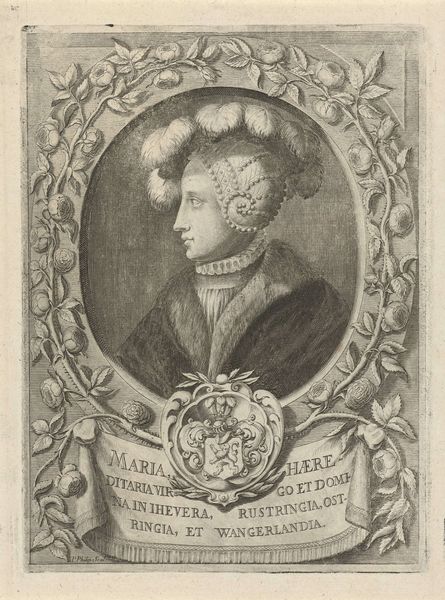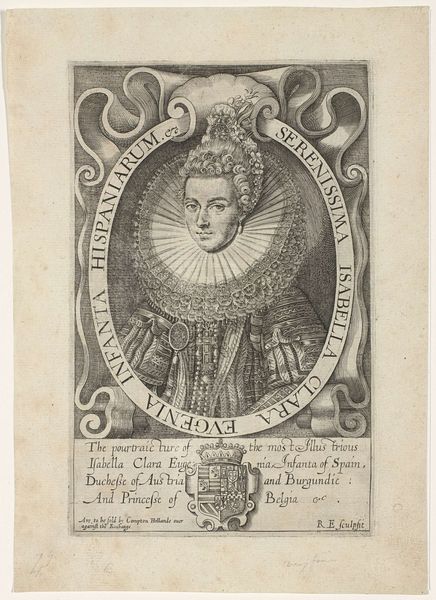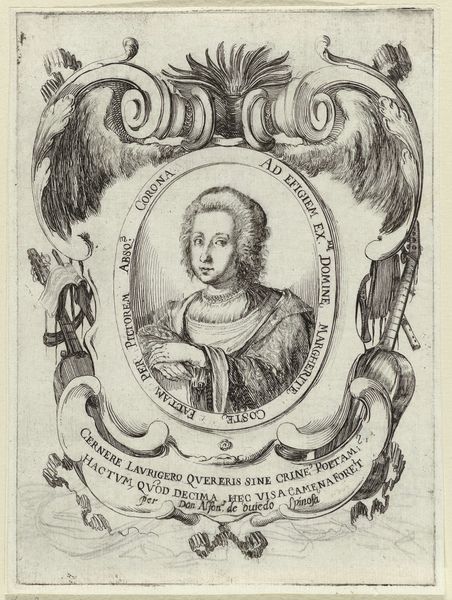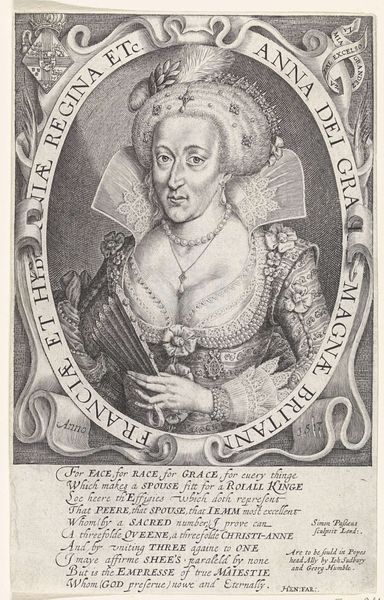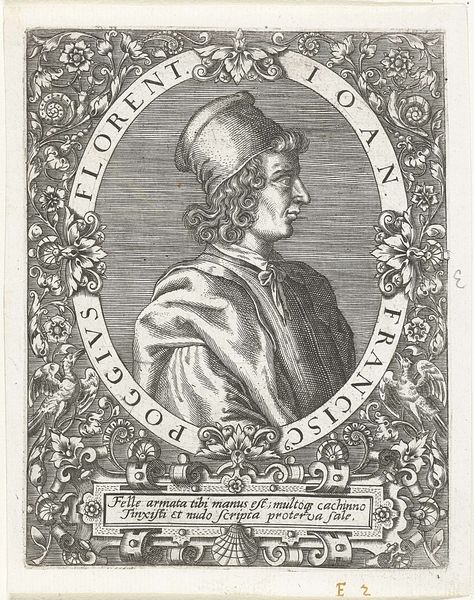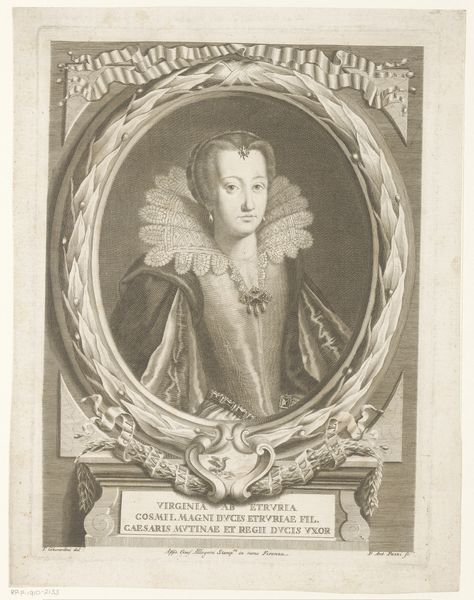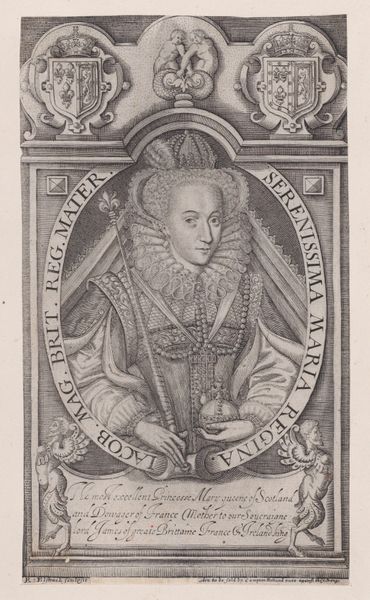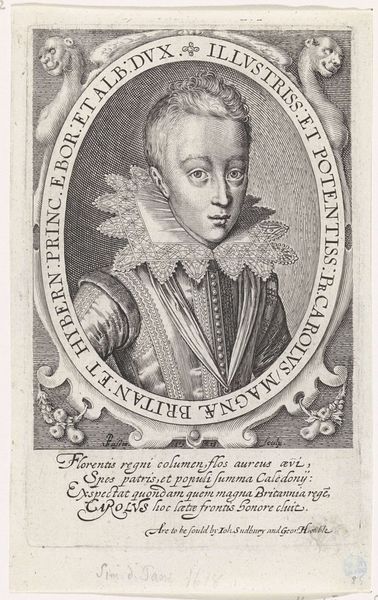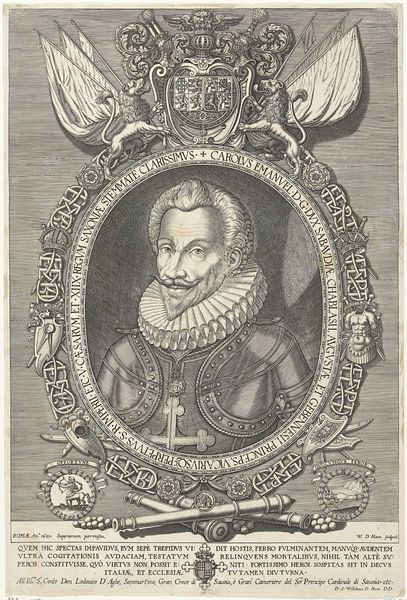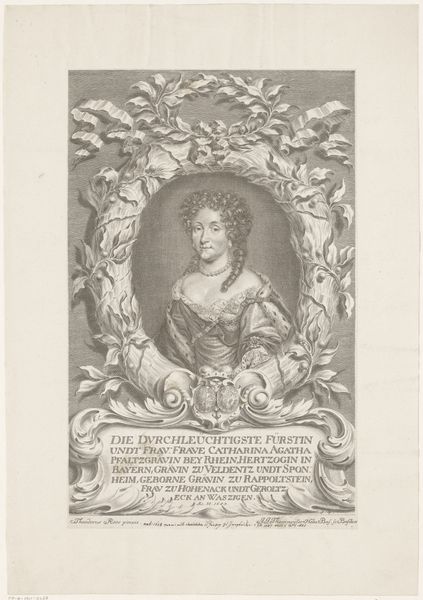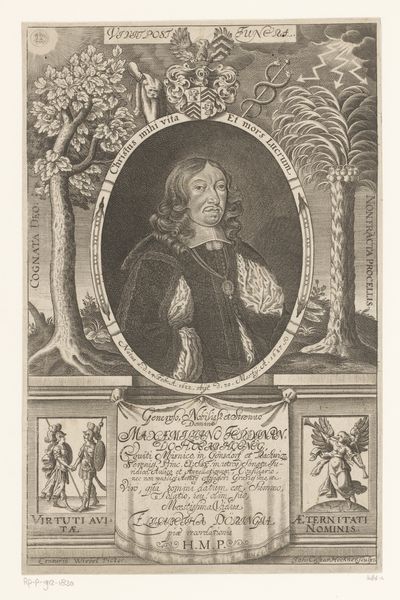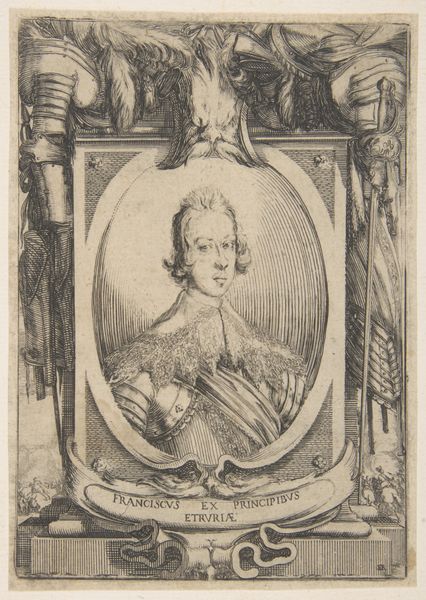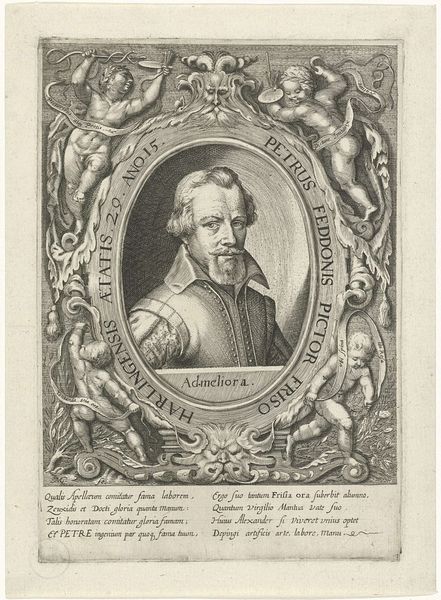
print, engraving
#
portrait
#
baroque
# print
#
old engraving style
#
engraving
Dimensions: height 185 mm, width 116 mm
Copyright: Rijks Museum: Open Domain
Editor: Here we have a 1617 engraving by Simon van de Passe: *Busteportret van Anna van Denemarken, koningin van Engeland*. It feels so formal, almost like a mask, with all that elaborate lace. How would you interpret this work? Curator: The image operates on so many symbolic registers! Look closely: the inscription frames her, proclaiming her titles, solidifying her identity within a matrix of power and lineage. Do you notice how the symbols—the crowns woven into her hair, the density of jewels— speak to more than just wealth? Editor: Yes, definitely. It’s a statement. Curator: Exactly! But what kind of statement? Consider the context: Anna of Denmark, a powerful woman in a patriarchal society, wife of King James I. The imagery presents her as the ideal queen: pious, fertile, and of noble birth – virtues amplified and visually reinforced. This iconography was political messaging, constructing a carefully managed image. And that poem at the bottom? Editor: Yes, I was wondering about that...It's kind of elaborate, even for the time. Curator: Indeed. “A threefolde OVEENE, a threefolde CHRISTI-ANNE" It directly reinforces those coded symbols in the portrait. So, the poem and image work together as a cohesive cultural construct – reinforcing dynastic stability and divine right through the queen's carefully crafted persona. How does that resonate with your initial feeling of a "mask"? Editor: I see your point! I still sense the formality, but now it seems less about hiding and more about actively building up this very specific image of royalty. It's like visual PR. Curator: Precisely. We've journeyed from initial impressions of surface appearances to deciphering layers of symbolic communication and understanding the forces shaping her image, which is the purpose of icons.
Comments
No comments
Be the first to comment and join the conversation on the ultimate creative platform.
